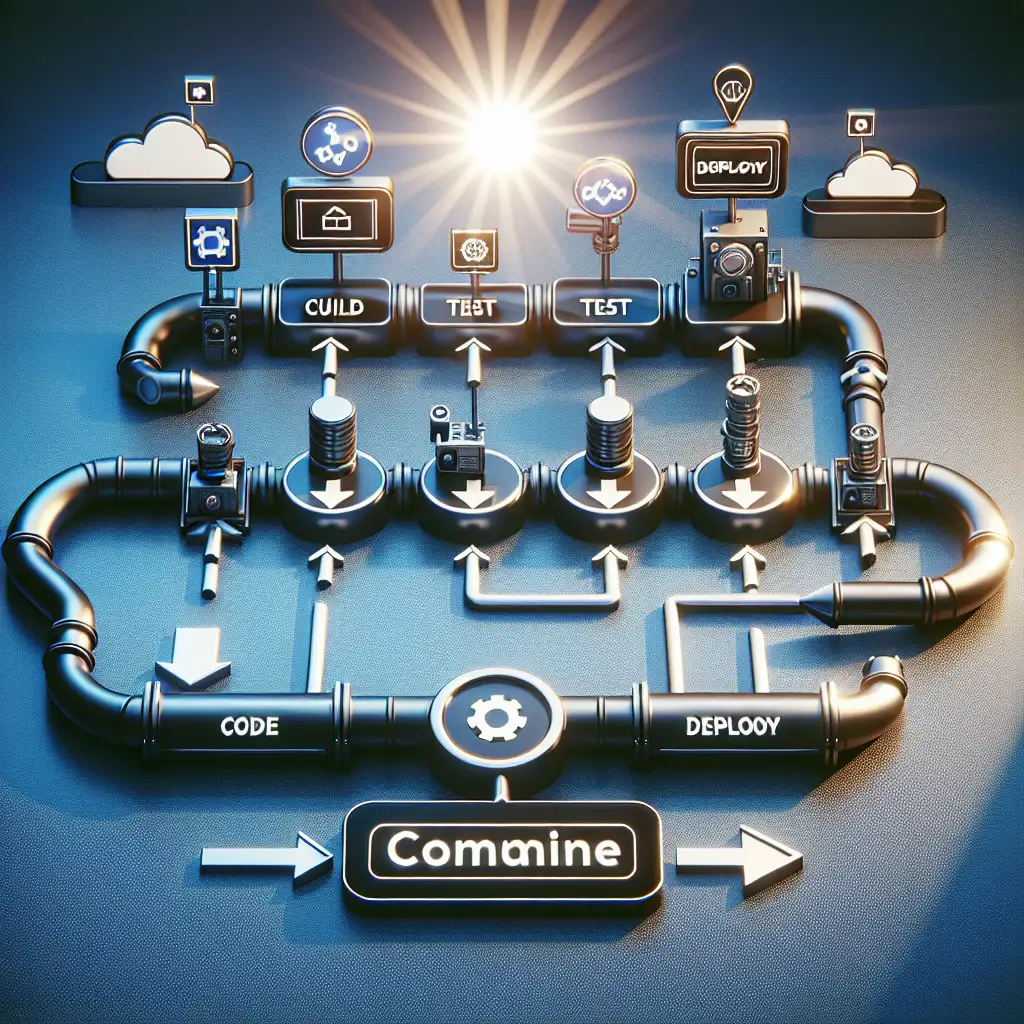Mastering Azure DevOps Pipelines: Automate Your CI/CD with Precision
Code reaches production faster when the road is paved with automated, reliable pipelines. Yet, too often Azure DevOps Pipelines are treated as throwaway scripts—bolted on just to get a green build. Missed opportunities abound for error prediction, rapid rollback, and robust traceability.
Let’s dissect what it takes to run precise, maintainable CI/CD pipelines using Azure DevOps.
Azure DevOps Pipelines: Capabilities
Azure DevOps Pipelines is a managed service orchestrating build, test, and deployment workflows for applications spanning .NET, Node.js, Python, Java, and more. It unifies CI and CD into a declarative framework, with full support for containerized and cloud-native deployments. YAML-as-code enables versioned, peer-reviewed pipeline definitions—a must for modern delivery.
What Actually Improves When Pipelines Are Engineered, Not Just Scripted
- Deterministic Deployments: Each release is a carbon copy. Deployment order, parallelism, and rollback are all controlled.
- Early Defect Detection: Automated suites capture regressions immediately. No more "works on my machine".
- Environment Parity: Dev, staging, and production run identical steps. Less drift, fewer last-minute surprises.
- Auditability: Source, build, and release logs are immutable and granular. Who, what, and when—answered in seconds.
- Horizontal Scaling: Templated stages extend across microservice landscapes or mono-repo setups.
Pipeline Setup: Pragmatic Walkthrough
Step 1: Baseline Pipeline Construction
Start at the Azure DevOps portal—project context is assumed. For greenfield teams, repository onboarding happens via GitHub OAuth or direct Azure Repos connection.
Navigation:
Pipelines ➞ Create Pipeline
Repository Support:
GitHub, Azure Repos, Bitbucket, GitLab — all supported. Use OAuth to connect external repos.
Now, fork between GUI designer (suitable for legacy, rarely used for greenfield) or define infrastructure-as-code with a YAML file. Always use YAML unless experimenting or reverse engineering.
Minimal, Workable YAML (.NET 6, artifact publishing)
trigger:
- main
pool:
vmImage: 'ubuntu-latest'
variables:
buildConfiguration: 'Release'
steps:
- task: UseDotNet@2
inputs:
packageType: 'sdk'
version: '6.0.x'
- script: dotnet build --configuration $(buildConfiguration)
displayName: 'Build Project'
- script: dotnet test --no-build --logger trx
displayName: 'Run Tests'
- task: PublishTestResults@2
inputs:
testResultsFormat: 'VSTest'
testResultsFiles: '**/*.trx'
- task: PublishBuildArtifacts@1
inputs:
PathtoPublish: '$(Build.ArtifactStagingDirectory)'
ArtifactName: 'drop'
Note:
Linux images are ephemeral. Dependency restores are repeated unless you manually enable caching (see below).
Step 2: Insert Automated Testing Rigor
Fact: Many teams forget to publish test results to the pipeline dashboard. Without this, test failure root cause analysis becomes time-intensive.
Add the PublishTestResults@2 task to pipe TRX or JUnit files into Azure reporting.
Test summary is then immediately visible without sifting through console logs.
It's common for UI or integration tests to generate flaky results in shared runners. Mitigate by isolating parallel test runs or marking non-deterministic tests with [Category("Flaky")] and configuring conditional pipeline exclusion.
Step 3: Move Beyond Build—Implementing CD
Single-stage build pipelines are insufficient for critical workloads. Use multi-stage YAML for separation of concerns and easier approvals.
Multi-Stage Example: Build → Deploy_Dev
stages:
- stage: Build
jobs:
- job: BuildAndTest
pool:
vmImage: 'ubuntu-latest'
steps:
# As above: build, test, publish artifacts
- stage: Deploy_Dev
dependsOn: Build
jobs:
- deployment: DeployToDev
environment: 'development'
pool:
vmImage: 'ubuntu-latest'
strategy:
runOnce:
deploy:
steps:
- download: current
artifact: drop
- script: |
echo "Deploy placeholder - replace with az cli, kubectl, or ARM/Bicep call"
Known Issue:
Scoped variables can behave unexpectedly between stages unless explicitly passed.
Add environments for staging/production. Insert approval gates for high-stakes stages using Azure DevOps Environment approvals.
Step 4: Raise Pipeline Maturity
- YAML Templates: Extract repetitive steps—e.g.,
dotnet restore—into atemplate.ymlfile. Reference across services. - Variable Groups & Secrets: Secure credentials with Azure Key Vault integration. Reference via
$(mySecret), avoid hardcoding. - PR Validation: Configure branch policies—trigger builds/validations on pull requests before merge.
- Selective Triggers: Use
pathsandtagsto limit when pipelines fire, reducing unnecessary builds. - Caching: Enable with the
Cache@2task for~/.nuget/packagesto save minutes off builds. - Matrix/Parallelism: Define axes for OS, .NET version, or DB backends to validate true compatibility.
Table: Select YAML Features, Their Use Cases, and Gotchas
| Feature | Application | Caveat/Trade-off |
|---|---|---|
template | Shared logic across repos | Version drift can occur between consuming repos |
dependsOn | Enforce stage ordering | Hidden cyclic dependencies can arise |
condition | Dynamic step/stage execution | Debugging why branches didn't run is non-trivial |
environment | Approval gates/environment scopes | Delays if approvals aren’t monitored or auto-approved |
Cache@2 | Speed up restores, builds | Incorrect keying yields silent cache misses |
Troubleshooting Under Load
Unexpected build failures? Inspect build logs with "Diagnostic" verbosity activated.
Example log excerpt when dotnet restore fails due to missing NuGet endpoint:
error NU1301: Unable to load the service index for source https://api.nuget.org/v3/index.json.
- Causes include proxy issues on private runners or misconfigured credential providers.
YAML syntax mishaps? Use the Azure DevOps online editor with Validate before saving; version control a linter like yamllint for pre-commit checks.
Pro Tip:
When testing pipeline changes, use a feature branch and a local Azure DevOps sandbox project. Avoid cluttering production pipelines with iterative build noise.
Practical Considerations and Final Thoughts
A robust Azure DevOps Pipeline minimizes human input while maximizing traceable, immutable release flow. Done well, pipelines predict errors, surface regression trends, and unlock horizontal scaling across a complex cloud estate.
But even best practices require tailoring. Monorepos running dozens of pipeline variants see YAML deduplication pay off; single-service teams prioritize rapid-feedback with lightweight pipelines. Don’t hesitate to bypass a best practice if context demands it—just document the exception.
Side note:
Declarative pipeline as code is not a panacea. Emergency hotfixes sometimes require field ops and manual artifact promotions. Build review processes with this latent risk in mind.
If you’re pushing pipeline maturity, focus next on pipeline isolation (no cross-service breakage), in-depth security scanning, and multi-repository triggers. Multi-stage YAML isn’t perfect, but it moves teams beyond basic scripting toward infrastructure you can trust in production.
Avoid dogma—engineer for your context.
